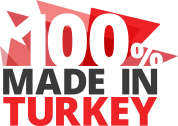Disintegration Capacity and Flushability Test Methods for Tissue Products
The Slosh Box test is a laboratory method used to evaluate the disintegration and flushability performance of tissue products such as toilet paper, facial tissue, and paper towels. During the test, a sample is placed in a chamber filled with water and subjected to mechanical agitation, generating turbulence that simulates real sewage conditions. This process determines whether the product can safely disintegrate without causing blockages in sewage or wastewater systems.
The Slosh Box test is widely used by paper manufacturers, hygiene product producers, and quality control laboratories to assess product performance and verify compliance with international standards.
Principle of the Slosh Box Test
The test simulates real-use conditions in a controlled laboratory setting. Tissue samples are placed in water and subjected to controlled agitation. At the end of the test, the level of disintegration is visually assessed or quantitatively measured.
Basic principle:
The sample is prepared in a defined size and weight.
It is placed in the Slosh Box chamber with a measured amount of water.
The device agitates the chamber at a defined speed and duration.
At the end of the test, the level of fiber breakdown is examined and evaluated according to set criteria.
Equipment and Test System
A Slosh Box device generally consists of:
Test Chamber: A closed compartment holding the sample and water.
Agitation Mechanism: Motor-driven system that oscillates the chamber to create turbulence.
Timer and Speed Controller: Controls test duration and agitation frequency.
Evaluation Screen or Sieve: Separates disintegrated fibers for measurement.
Since water temperature, volume, and agitation speed directly affect results, standardized parameters must be strictly followed.
Standards and Test Methods
The Slosh Box test can be conducted under different international standards. The most commonly used are:
INDA/EDANA GD4 (Guidelines for Assessing Flushability)
Developed by the nonwovens industry associations in the USA and Europe.
Defines whether products marketed as flushable will safely break down in sewer and septic systems.
Establishes criteria for minimum disintegration time and particle size.
ISO 12625-17 (Tissue Paper – Determination of Disintegration in Water)
An ISO standard for tissue product disintegration in water.
Measures the percentage of disintegration within a defined time.
Ensures repeatability and comparability in laboratory conditions.
Importance of Standards:
These standards ensure that products marketed as “flushable” have been scientifically validated. Compliance protects consumers and minimizes the risk of sewer blockages.
Slosh Box Test Procedure
Sample Preparation – Cut and weigh tissue in standard sizes.
Water Addition – Add a specified water volume (typically 1–2 liters) to the test chamber.
Agitation – Run the device at the specified speed (e.g., 30 minutes of oscillation).
Disintegration Measurement – Strain and quantify the remaining fiber particles.
Reporting – Results are classified as “pass” or “fail” based on standard criteria.
Interpretation of Results and Applications
If the Slosh Box test shows that a product disintegrates effectively, it is classified as flushable. These results are critical for:
Improving product design (fiber structure, binding agents).
Supporting eco-friendly product development.
Meeting regulatory requirements and ensuring consumer safety.
Advantages and Limitations
Advantages:
Simulates real usage conditions.
Provides repeatable and reliable results.
Enables comparison between different products.
Limitations:
Not suitable for all product types.
Laminated or coated tissues may behave differently in real sewage systems than in lab testing.
Frequently Asked Questions (FAQ)
1. How long does the Slosh Box test take?
Typically around 30 minutes, depending on the chosen standard and sample type.
2. Can all paper products undergo this test?
No, it is designed mainly for flushable tissue products intended for sewage systems.
3. What determines whether a product is “flushable”?
The disintegration percentage must exceed the minimum criteria defined in the standard.
4. Is the Slosh Box device manual or automatic?
Modern devices are fully automated, but manual-control models are also available.
5. What factors affect the cost of testing?
Device capacity, test standard, sample volume, and laboratory location.
RELATED PRODUCTS
RELATED SUBJECTS
- ISO 178 - 3-Point Test Device
- Latex Glove Tensile Test: Methods, Standards, and Features
- Peel Test on Tedlar PVF Films: Methods for Measuring Coating and Adhesive Durability
- Sponge Tests: Features and Application Areas
- What Is A Drying Oven?
- What Is The Coeffıcient of Friction (COF)?
- What Is a Film Adhesion and Durability Test Device?
- What Is the 3-Point Bending Test on Ampoules and Why Is It Important?
- What is Measurement Uncertainty?
- What is the Sponge Fatigue Test?

